Q-method is an innovative research technique that provides quantitative and qualitative information about the subjective values of participants. Usually studies are designed to explore how people “talk about” an issue, but the method can also support research using visual information – how people “see” a subject.
As part of her doctoral research, Christine developed an innovative Visual Q-methodology technique to elicit participants’ subjective landscape preferences and to ascertain how participants value landscape character and beauty. This study was undertaken to better understand subjective opinions, and to determine whether groups of people hold common values.
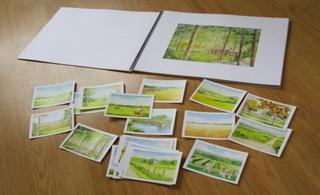
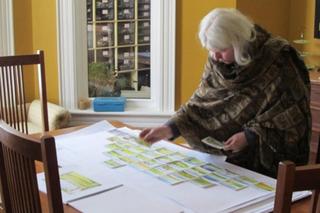
Thirty-five watercolour paintings were created by reviewing and synthesizing an extensive collection of imagery that was gathered by observing landscape imagery valued by citizens in the case study area; this consisted of artwork, photography, advertising material or online reproductions of landscapes that were created, collected, displayed or shared by residents. A diverse group of 82 participants ranked the images in order of preference (most prefer to least prefer) in a Q-sort pyramid.
Results
Four key patterns or viewpoints emerged from analysis of the results. Interpretation of these unique patterns provided a window to understand divergent ways that people see the same landscape. In Q-methodology research it is common to name the factors to represent the particular points of view that a number of participants share.
Factor 1: The Naturalist
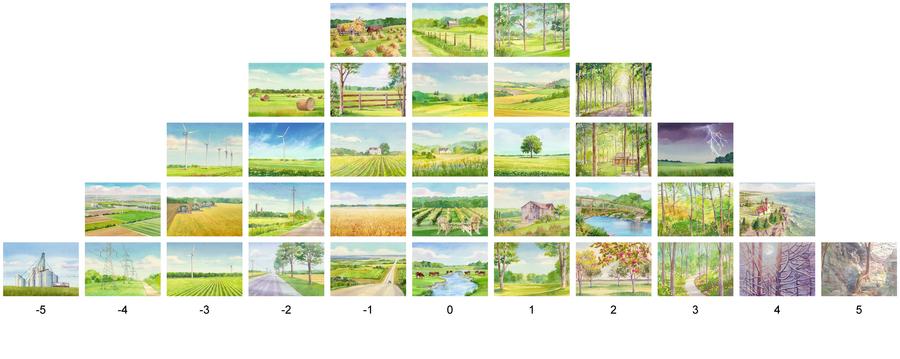
The Naturalist represents the most common value orientation found among participants in the study. Most preferred are natural landscapes, where nature is perceived as dominant and powerful, and the influence of humans is least visible. The least preferred landscapes show large-scale human intervention, such as industrial agriculture, road infrastructure, and energy infrastructure.
Factor 2: The Gardener
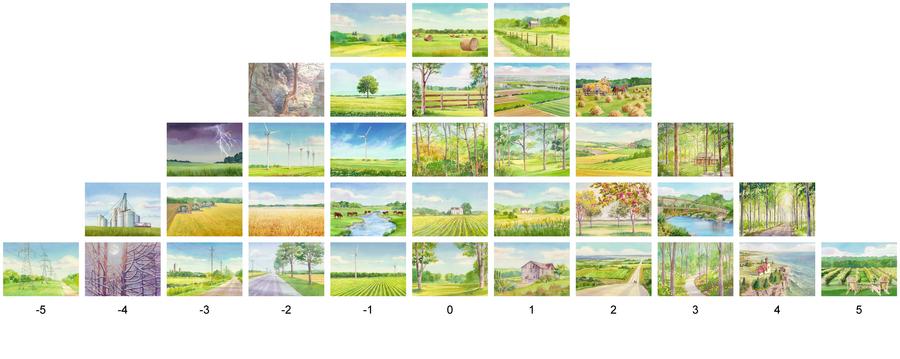
The Gardener corresponds with a view of the landscape as both nature and a home for humans. Preferred landscapes reveal human effort to work with nature to shape and alter the contours of the land, but also to be shaped by nature and to adapt to its forms in a symbiotic relationship. Preferred landscape patterns are fine grained and have a balance of human and natural elements.
Factor 3: The Cultivator

The Cultivator prefers farming landscapes with open landscapes. Historic and modern agricultural traditions are equally embraced as they represent the bounty and harvest. Cultivators value a high level of involvement in the building and management of landscapes.
Factor 4: The Builder
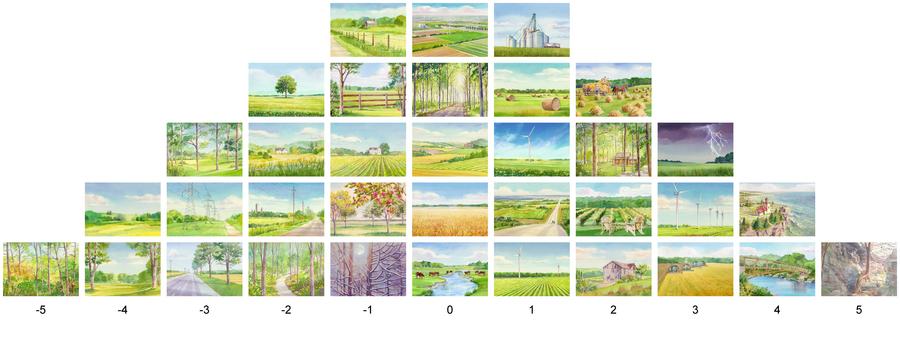
The Builder appreciates landscapes that display strength and evidence of human creativity, natural forces, or a combination of both. These participants prefer constructed landscapes with evidence of progress and vitality.
Analysis of the results, including the comments provided by participants during interviews, showed that cultural (learned) and biological (innate) processes influence perceptions of landscape. While new information may sway some landscape preferences, other environmental responses are very deeply rooted and may stem from evolutionary impulses. Understanding where preferences are rooted helps to explain why some landscape changes are resisted while others are readily adapted to
Preferences for Wind Energy Landscapes
A secondary Q-method study explored how people view future scenarios of wind energy infrastructure. Paintings from the landscape character study were adjusted digitally to show various siting alternatives. Results found three key viewpoints among participants.

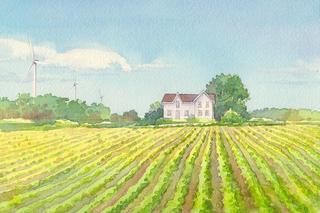

Other Applications of Q-Method
Q-method is an innovative research technique that provides quantitative and qualitative information about the subjective values of participants. Usually studies are designed to explore how people “talk about” an issue, but the method can also support research using visual information – how people “see” a subject.
Funding for this research was provided by OMAFRA. A report on the outcomes of this research can be found here
Check out more examples of Christine’s research that uses Q-method: